Every year on May 1, people around the globe celebrate International Labour Day, also known as International Workers’ Day. It’s a day dedicated to recognising the hard work and contributions of workers — the people who keep the world running, often behind the scenes.
But how did it all begin?
The roots of Labour Day go back to the late 1800s, during a time when factory workers were made to work long hours in tough conditions. In 1886, in Chicago, thousands of workers went on strike demanding something we now take for granted — an eight-hour workday. What started as a peaceful protest turned violent during what is now known as the Haymarket Affair. Despite the chaos, their fight sparked a global movement for workers’ rights.
Today, May Day is not just a holiday — it’s a reminder of the struggles and strength of workers across the world.
Haymarket Affair
India’s own labour story
While May Day began as a global movement, India’s voice joined in on May 1, 1923, when the day was celebrated for the first time in the country — right in Chennai (then known as Madras).
The man behind it? Singaravelar, a bold freedom fighter, lawyer, and advocate for workers’ rights. He founded the Labour Kisan Party of Hindustan and organised two public meetings to honour workers and demand better treatment for them. This historic moment marked India’s entry into the international labour movement.
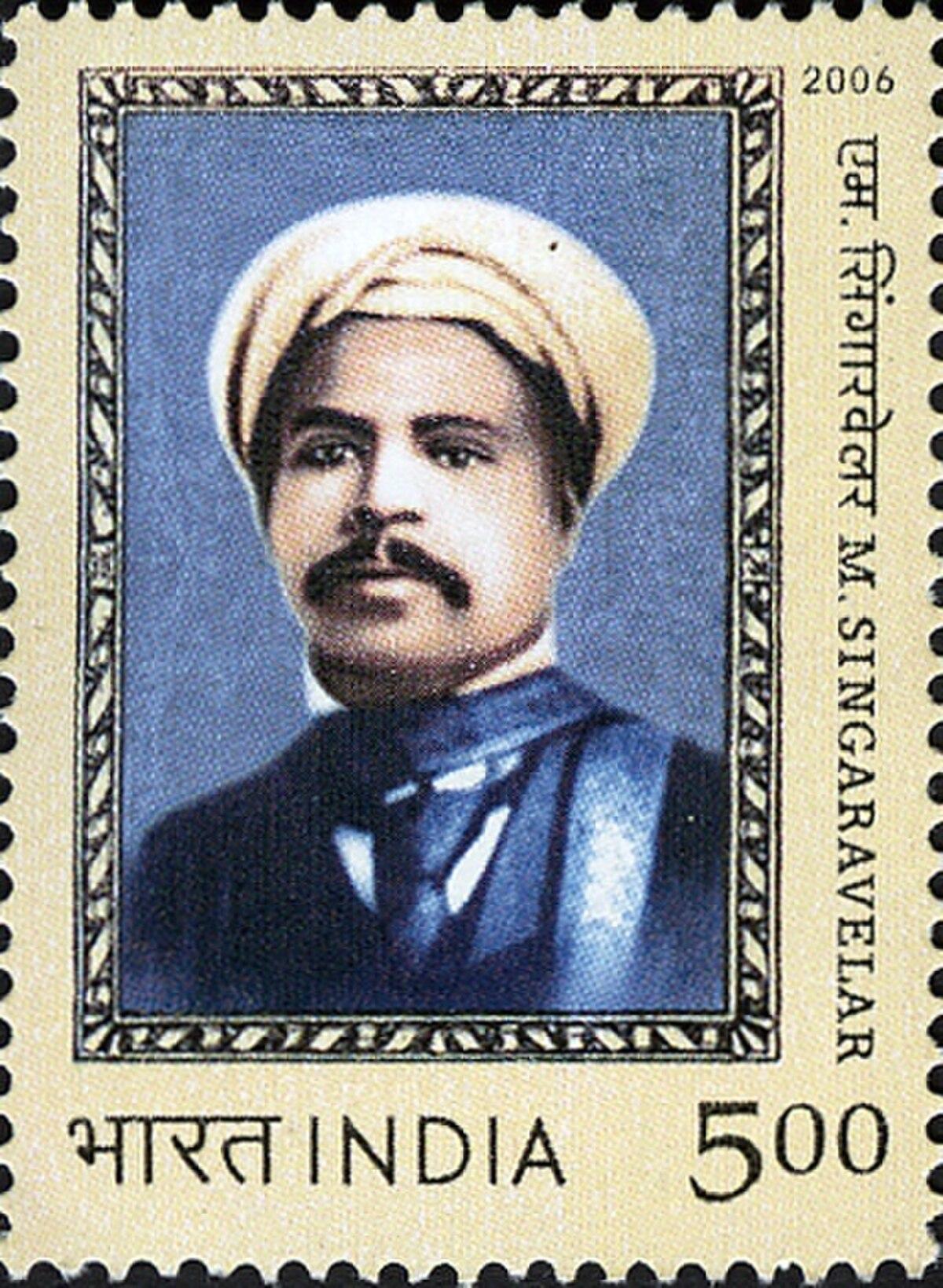
Malayapuram Singaravelu Chettiar 2006 stamp of India.
During British rule, many Indian workers faced harsh conditions — long hours, very low wages, and almost no rights. Whether in mills, plantations, mines or railway construction, workers were often overworked and underpaid. They had little say in their working conditions and were rarely treated with dignity.
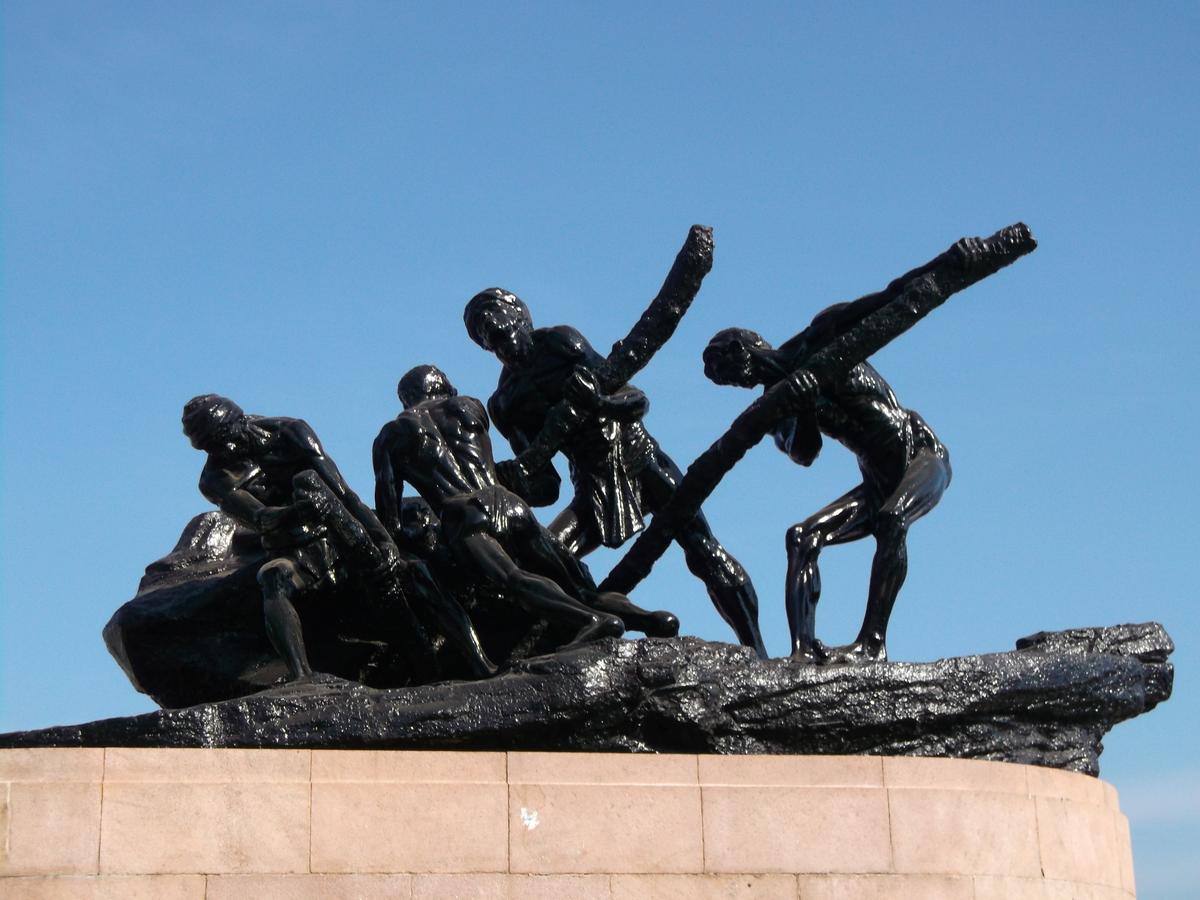
Triumph of Labour statue at Marina Beach, Chennai.
Singaravelar’s celebration of May Day was not just symbolic — it was a call to stand up, speak out, and demand justice for Indian labourers. From that day onward, India began shaping its own journey of worker protection, rights, and recognition. (above picture) As part of this growing recognition of workers’ rights, the Triumph of Labour statue, sculpted by Debi Prasad Roy Chowdhury from the Government of Madras School of Arts and Crafts.was installed at Marina Beach, Chennai, in 1959, to honour the contributions of labourers. Sculpted by Debi Prasad Roy Chowdhury, from the Madras School of Art (now Government College of Fine Arts, Chennai) it stands as a symbol of their enduring fight.
The Builders of modern India
Workers have been the unsung heroes behind India’s progress, often working tirelessly behind the scenes to build the nation’s infrastructure and economy. From laying the railway tracks that connected distant corners of the country to constructing dams, roads, and metros, they have shaped the very foundation of modern India.
Key sectors like agriculture, construction, mining, and the textile industry have relied heavily on labourers and their efforts have been pivotal in the country’s growth. Iconic projects like the Bhakra Nangal Dam, which helped transform India’s irrigation systems, and the Delhi Metro, which revolutionised urban transport, stand as lasting examples of their hard work.
Even today, initiatives like the Mahatma Gandhi National Rural Employment Guarantee Act (MGNREGA) depend on the labour of countless individuals, providing jobs to millions in rural areas and ensuring that workers have a means of livelihood.
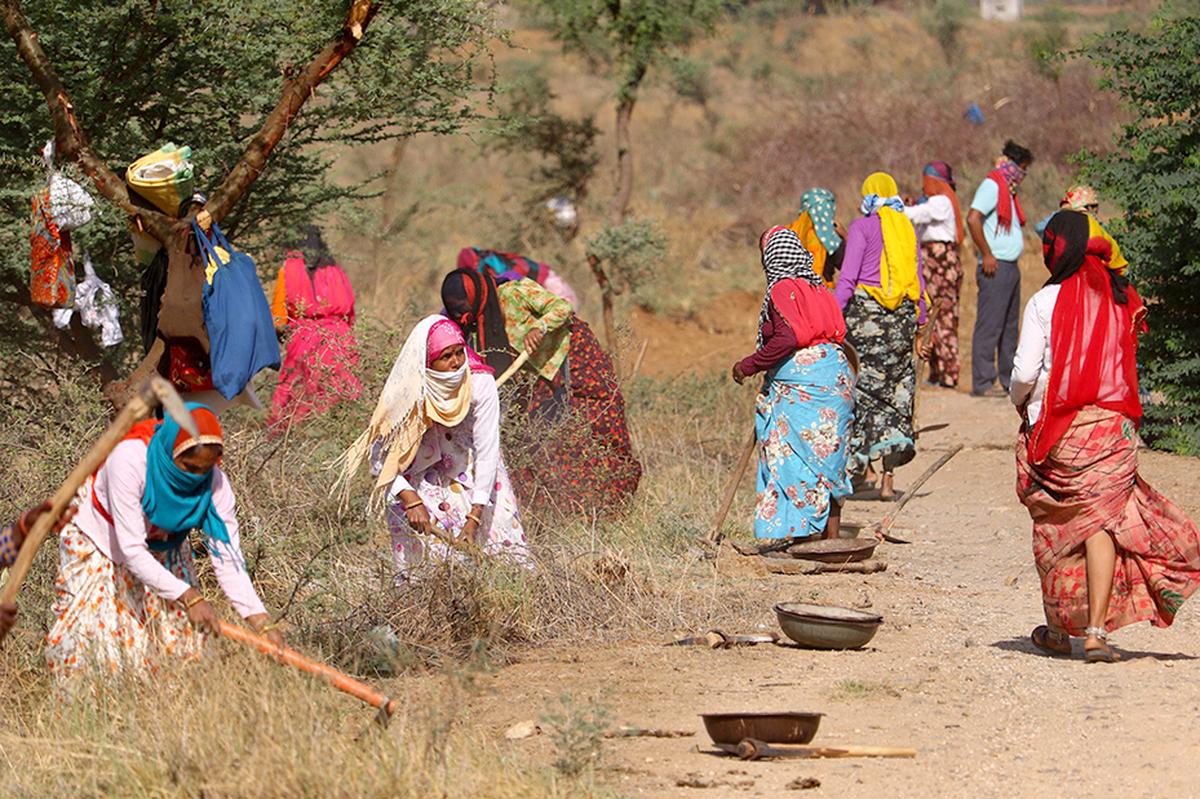
Labourers under Mahatma Gandhi National Rural Employment Guarantee Act (MGNREGA) work at a site on a hot day, during the ongoing COVID-19 lockdown, on the outskirts of Ajmer, Tuesday, May 19, 2020.
| Photo Credit:
–
In recent times, the silent yet powerful contribution of migrant workers has been more visible, especially during the COVID-19 lockdown, when millions of them played a critical role in keeping essential services running, often at great personal cost. Their resilience during these challenging times reminded us of the importance of every worker, no matter how small their task may seem.
Changing times
Over time, labour laws in India have changed a lot to protect workers and make sure they get fair treatment. It started with laws like the Factories Act, which made factories safer places to work, and the Minimum Wages Act, which made sure workers get paid fairly for their hard work. Later, the MGNREGA brought jobs to millions in rural areas, ensuring that even the smallest villages got a helping hand. In today’s world, with the rise of delivery services, freelancers, and gig workers, May Day is also about making sure that these workers are treated with dignity, fairness, and safety.

Deliverymen of food aggregators Swiggy and Zomato ride their bikes towards their destinations, in New Delhi.
| Photo Credit:
–
Flashback: Some of the key moments in India’s Labour History
The Indian Labour Conference (1959)
On July 27, 1959, the Indian Labour Conference was opened by Mr. Bistmuram Medhi, then Governor of Madras, at Rajaji Hall in Chennai. The conference brought together workers’ unions, employers, and government representatives to discuss labour rights in post-independence India. It played a key role in shaping future labour reforms and emphasized the importance of formal, ongoing dialogue to improve workers’ welfare.
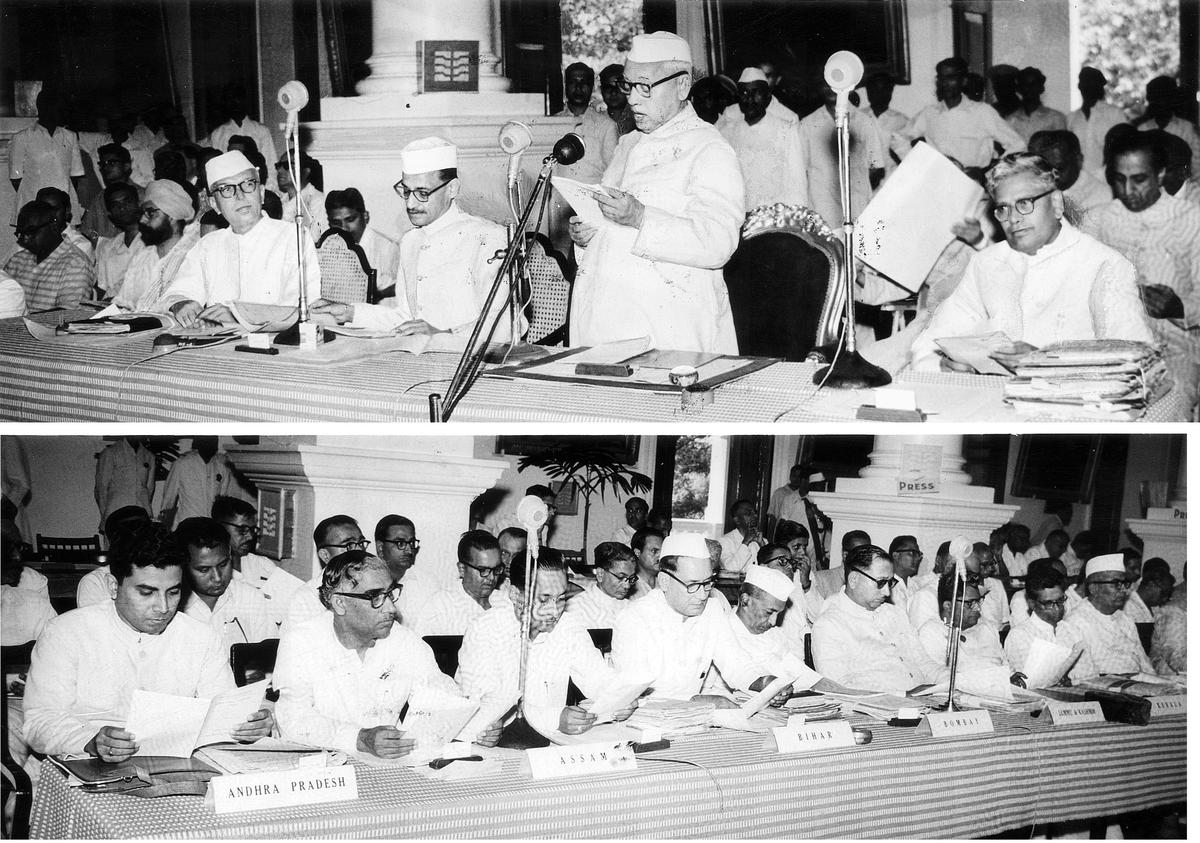
Mr. Bistmuram Medhi, Governor ot Madras, opening the Session of the Indian Labour Conference at Rajaji Hall in Madras on July 27, 1959.
(Published in The Hindu on July 28, 1959)
| Photo Credit:
GOVERNMENT OF MADRAS
The 1974 National Rail Strike
In May 1974 there was a nationwide strike led by railway workers demanding better wages and working conditions. The strike paralysed the railway network, underscoring the importance of workers in the country’s infrastructure and the need for better treatment of public sector employees. (in pic) An armed guard perched atop a wagon of timber as freight train pulls out of New Delhi, the third day of National rail Strike. (1974).
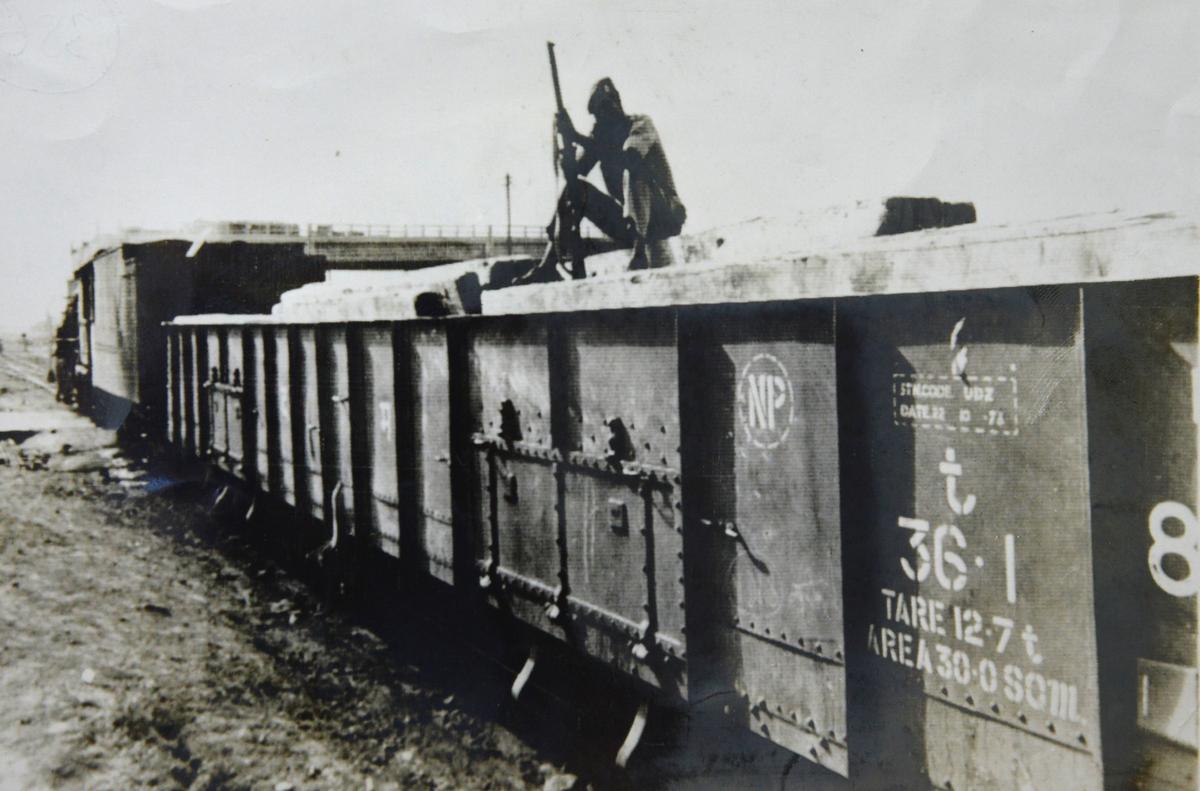
India Joins the ILO (1919)
India became a founding member of the International Labour Organisation (ILO) in 1919, even before gaining independence. The ILO was born out of growing global recognition of workers’ rights, especially after the struggles and movements led by labourers during the Industrial Revolution and World War I. It was a direct result of the rising demand for humane working conditions, proving that the voice of workers could shape international policy. India’s early involvement laid the foundation for future labour laws and social protection measures.
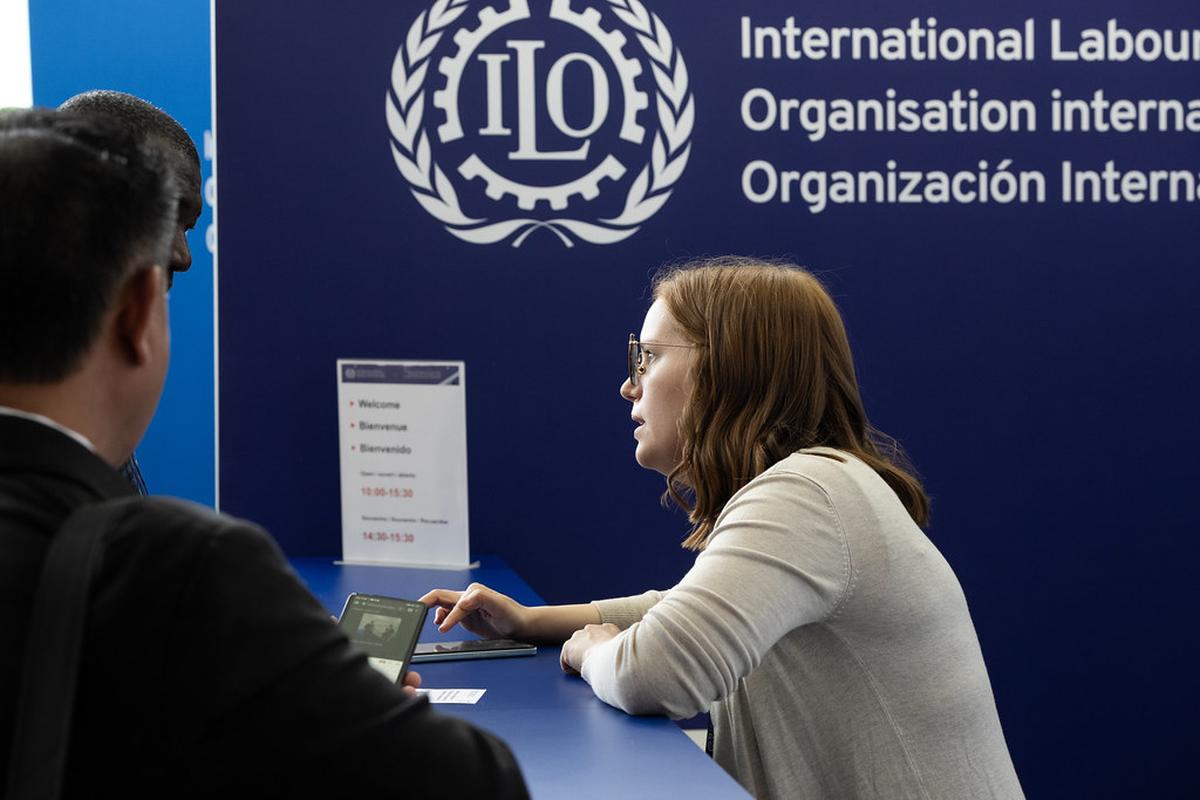
Nation built by all
May Day isn’t just about parades or speeches — it’s about respecting every job, no matter how big or small. From the teachers who guide us, to the cleaners who keep our classrooms spotless, each job plays an important role in making the world run smoothly. Think about the uniforms you wear, the desks you sit at, or the books you read. Behind all these things is someone’s hard work — whether it’s the factory workers who make the fabric, the carpenters who design the furniture, or the publishers who print your textbooks. Let’s remember that the nation is built by every mason, nurse, driver, farmer, and teacher.
Published – May 01, 2025 10:44 am IST




































